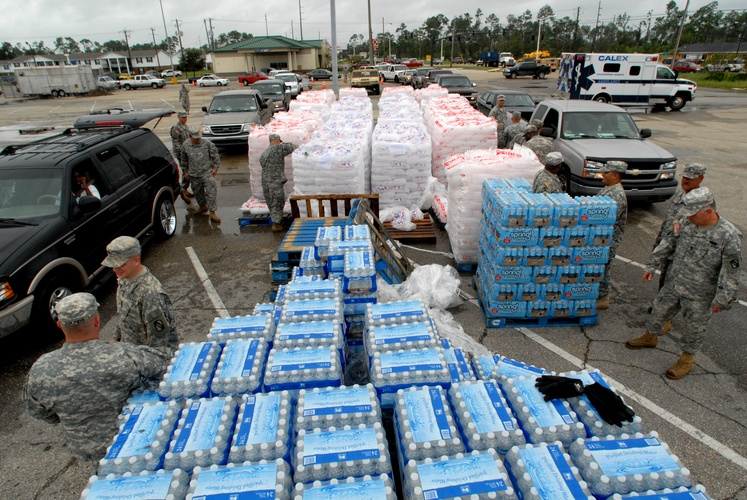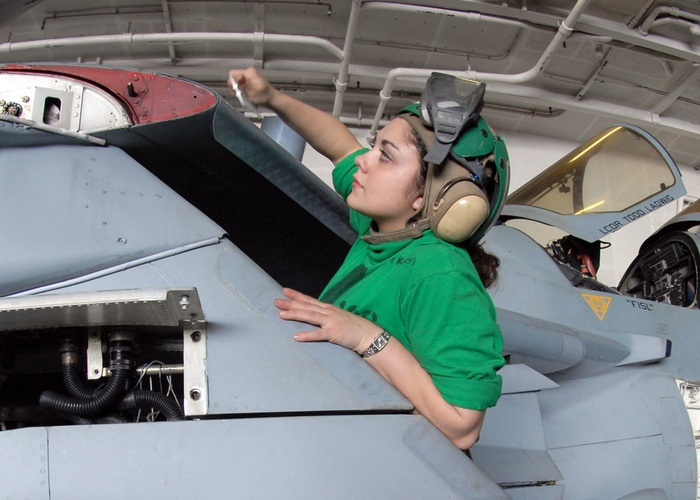Military organizational structure is a fascinating thing; it’s probably why those of us with a background in the military find it so hard to break away. It becomes a part of who we are. We have eaten, lived, and breathed it for so many years that it has become second nature. Now, not that you immediately pick up the structure of a new branch when you cross over, whether as a uniformed member or as a civilian (the latter happens frequently). A military installation is basically a small city. It has a robust public works department (Civil Engineering Squadron in the USAF), emergency services, and of course, all of the maintenance levels necessary to keep the fleet in the air. And last but not least, the pilots and aircrew. Let’s take a broad overview of an Air Force Base and see what makes it tick.
The Anatomy of An Air Force Base
An average Air Force Base (AFB) with a flying mission and flying wing has anywhere from 5,000-10,000 active duty Airmen stationed there to support the mission. This is always subject to change, and the manpower documents vary widely from mission to mission. But all U.S. Air Force bases have some common threads. And in this article, we are speaking specifically to flying wings.

They structure the Base into a series of groups with a clutch of several squadrons.
Generally, the groups are:
- Operations Group: flying squadrons, Operation Support Squadron (base ops, weather, scheduling, etc.)
- Mission Support Group: the MSG includes all the support functions on the base, such as contracting, finance, public works, communications, logistics, and base security.
- Maintenance Group: they conduct all the aircraft maintenance within the MXG. While some repairs do have to go off-station, they handle most repairs and inspections in-house. It is a remarkable system.
- Medical Group: some bases have a full-blown hospital, while others have a clinic. As it pertains to flying, there is always a flight surgeon on the station.
Maintenance Group
The largest concentration of personnel on an AFB is always the Maintenance Group (MXG). The modern MXG usually comprises three distinct squadrons: the Aircraft Maintenance Squadron (AMXS), Equipment Maintenance Squadron (EMS), and Component Maintenance Squadron (CMS). This is a fairly typical format and may change from installation to installation.
Aircraft Maintenance Squadron
The AMXS is the heart of the MXG. It is where the rubber meets the road, so to speak. The AMXS is the portion of the MXG that conducts all line maintenance on the aircraft. So, any breakage that occurs within standard repairs falls under the umbrella of the AMXS. This includes tires, brakes, engine swaps, auxiliary power unit repair and replacement, window changes, hourly post-flight inspections, pre-flight inspections, launch and recovery, and more. You can’t capture what all the AMXS does in a paragraph or two or even a whole book, really.

Equipment Maintenance Squadron
The EMS conducts heavy maintenance repairs on the aircraft in the fleet. EMS comprises a bunch of disciplines. They handle all sheet metal repair, painting, and machining, and the EMS handles all phase inspection cycles. Phase is a calendar or hours-based inspection cycle that is extremely intensive. The aircraft rolls into phase and will remain there for a few weeks, thoroughly combed over by a team of technicians. Phase allows some much-needed downtime to make repairs that have been deferred for a later date. Don’t worry; this is a highly common practice. Deferred items are always flyable write-ups that take too much time to rectify when the aircraft is in the flying schedule. Phase is a great time to address these. Another key component of the EMS is the aerospace ground equipment (AGE) flight. While it is not technically aircraft maintenance, you’ll be hard-pressed to get any maintenance done without properly serviced and functioning AGE. AGE is the lifeblood of the flightline, for sure. Without it, you don’t tow jets or see in the dark. You don’t clean windows, remove underwing panels (on heavies), and so on.
Component Maintenance Squadron
The CMS has a more tedious job. These are the guys who rebuild avionics, rebuild brakes, rebuild hydraulic actuators and do a bunch of engine component repairs.
Their job is thankless but necessary.
Civil Engineering
Air Force Civil Engineering is crucial to every flying wing. USAF CE comprises two distinct areas: vertical (buildings), and horizontal (pavement, etc.).
For the sake of a flying wing, the horizontal section of CE is the most important. CE horizontal maintains all the pavement on the base, which includes:
- Sweeping for FOD control.
- Snow & ice removal.
- Repairs.
It takes a lot of work to keep the pavement in an airport in good, safe, and operable condition, and it is up to CE to do just that. They work largely with Airfield Management, the Operations Group, and MXG leadership to identify weaknesses and areas prone to breakage or need repair. Also, they create maintenance plans, snow & ice plans, and sweeping schedules to keep the ramp in the best condition possible.

Operations Group
The Ops Group, or OG, is the last link in the flying process. The OG houses all the flying squadrons and a support squadron of aircrew and ground support personnel. The OG Commander is always a pilot and maintains currency, although they are usually involved in all sorts of comings and goings around the base. The OG always works in close concert with the MXG and MSG to keep their thumb on everything that affects the flying schedule. On any given day, dozens of things go into one successful sortie, let alone twenty or thirty. A FOD incident that require runway closure for an hour to sweep can push back multiple lines. If those lines are an aerial refueling (AR) scheduled (they usually do), it pushes back sorites from another unit as well. A part that cannot be sourced or isn’t in stock will take a red ball maintenance issue to a no-go. Every little piece along the way matters. If the base contracted for snow removal and they don’t deliver on time, or their level of service isn’t acceptable for flight operations, then daily flying gets canceled. If a serious problem is identified during maintenance and the part can’t be sourced, the airplane risks going into Hangar Queen status.

The best way to keep these things from happening is preventative maintenance. Create a reliable supply chain for your fleet today. Source reliable Ground Support Equipment now. And establish support contracts before you need them to screen your candidates instead of waiting until the 11th hour. Whatever your needs are in these areas, give Government Procurement, as operated by Greenwood Aerospace, a call today!


.svg)


.png)


